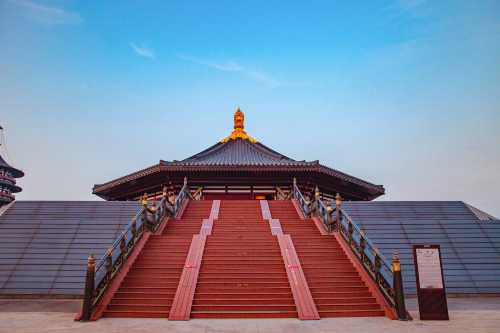App
Customer Support
Find Bookings
Popular Trip Moments
Help! I've found Luoyang's best-kept romantic secret! Early birds are winning big! | 3-Day 2-Night In-Depth Luoyang Travel Guide | Journey Through the Ancient Capital of Thirteen Dynasties, Unlock the Secrets of the Divine Capital! | Old Luoyang Lobster House | A Bite of Freshness, Rediscovering the Fireworks and Old Dreams of the Ancient Capital’s Summer Nights | When flowers bloom, they stir the capital | Luoyang Peonies | Help! I'd travel all the way to Luoyang just for this exhibition!! | Henan 5-Day Family Candlelight Tour | Who says the grandeur is only found in Chang'an? | Waterfalls and Bamboo Forests, the Ultimate Summer Escape! 2-Day Adventure in Chongdu Valley! | The Heavenly Palace in the Clouds, a Fairyland on Earth – Laojun Mountain, an Encounter with Paradise | Luoyang Peonies are the finest under heaven! The breathtaking sight of flowers blooming like an ocean leaves you speechless. | A hidden gem in Chanhe District! You won't want to leave once you arrive! | Falling into a golden dream, collecting the gentle whispers of midsummer | The first Marriott hotel in Luoyang, perfect for both business and leisure! The best international brand in Luoyang! | A Day Trip to Laojun Mountain for Gen Z! The Ultimate Guide is Here | Temples, Blossoms & Carved Stone: Ancient Beauty in Luoyang | The Ancient Capital - Imperial Luoyang, a hotel with an exceptional location. | The perfect blend of luxury and comfort awaits you at Hilton Hotels | Heavyweight National Treasures Arrive in Luoyang! The Grand Exhibition of Famen Temple Underground Palace Treasures is Now Open | Stay by Empress Wu's Palace in Luoyang! This Homestay Brings the Grandeur of the Tang Dynasty to Life | Longmen Grottoes~Breathtaking beyond words, who can truly grasp its beauty~ | Accidentally stayed in Princess Taiping's mansion in Luoyang! | Take your family this summer! | Don't miss these hidden gem destinations perfect for college students! | Luoyang Baiyun Mountain/A Heavenly Encounter Above the Clouds | Fall into a blaze of passion and embrace the summer in full swing | Phoenix Dance in the Divine Capital: A Complete Guide to the Immersive Epic Night Banquet of the Tang Dynasty | Summer Vacation Guide to Henan Travel Without Pitfalls | Finally, someone has cracked the code to touring Luoyang (with attraction guides included)! | Just 2 Hours by High-Speed Rail! 4 Healing Small Towns Perfect for Solo Escapes | Beijing Weekend Getaway with Kids: 4 Short Trip Destinations to Explore with Your Little Ones
Recommended Attractions at Popular Destinations
Attraction near Bangkok | Attraction near Manila | Attraction near Tokyo | Attraction near Taipei | Attraction near Hong Kong | Attraction near Seoul | Attraction near Kuala Lumpur | Attraction near Los Angeles | Attraction near Shanghai | Attraction near New York | Attraction near Shenzhen | Attraction near Osaka | Attraction near Singapore | Attraction near London | Attraction near Guangzhou | Attraction near San Francisco | Attraction near Beijing | Attraction near Macau | Attraction near Bali | Attraction near Jakarta | Attraction near Paris | Attraction near Ho Chi Minh City | Attraction near Istanbul | Attraction near Phuket | Attraction near Chicago | Attraction near Seattle | Attraction near Toronto | Attraction near Orlando | Attraction near Cebu | Attraction near Chiang Mai
Popular Restaurants in Luoyang
Luoyang Water Banquet | Shiwei | Xiaojie Tianfu | Dongshanbinguanzhong Restaurant | 国宝铂瑞酒店·麗轩餐厅 | YU GUO DE TIAN TAI | Shizi Street | Tiexielisongzuchuanyangroutangguan | 大刀面(升龙广场店) | 必胜客(丽新店) | FANG ZHONG SHAN HU LA SHANG LUO YANG DIAN | 海底捞火锅(应天门古城根店) | 海底捞火锅(王府井店) | 四小姐的店(新都汇店) | 遇·花庭里鲜牛肉火锅(西工店) | 海底捞火锅(中州万达店) | 李想大虾(牡丹路店) | 畅享牛排比萨自助(中州路店) | 四小姐的店(青少年宫店) | 遇·花庭里鲜牛肉火锅(涧西店) | 洛阳凤翔温泉酒店·丰泽园 | 海底捞火锅(泉舜店) | 卡萨米亚·蛋糕面包(万达店) | DQ(建业凯旋店) | Tudalixiuxian Restaurant (taiyuanlu) | KA SA MI YA JIAN YI KAI XUAN AN CHANG DIAN | 七日食(万达华阳店) | 蜀九香火锅(华阳店) | 丰盛斋(周公路店) | Kasamiya (baolong)
Popular Ranked Lists
Popular Premium Hotels in Saikai | Popular Luxury Hotels in Coles Bay | Top 3 Best Things to Do in Fuding | Popular Premium Hotels Near Mentawa Baru Hulu | Popular Best Things to Do in Zhuji | Top 4 Best Things to Do in Maoming | Popular Best Things to Do in Qinzhou | Popular Premium Hotels Near Jizan Region | Popular Must-Visit Restaurants in Santorini | Popular Must-Visit Restaurants in Jeju | Popular Best Things to Do in Lin County | Popular Premium Hotels Near Kamyzyaksky District | Popular Must-Visit Restaurants in Athens | Popular Premium Hotels Near Kemerovo | Popular Must-Visit Restaurants in Hong Kong | Top 10 Must-Visit Restaurants in Bad Ischl | Popular Premium Hotels in Shozu District | Popular Best Things to Do in Ruicheng | Popular Luxury Hotels in Ramatuelle | Popular Best Things to Do in Suifenhe | Popular Must-Visit Restaurants in Seoul | Popular Premium Hotels in Pragelato | Popular Best Things to Do in Xinchang | Popular Must-Visit Restaurants in Nha Trang | Popular Luxury Hotels in Freycinet National Park | Popular Best Things to Do in Neijiang | Popular Must-Visit Restaurants in Shanghai | Popular Must-Visit Restaurants in George Town | Popular Must-Visit Restaurants in Frankfurt | Popular Premium Hotels in Cotswold District
Payment Methods
Our Partners
Copyright © 2025 Trip.com Travel Singapore Pte. Ltd. All rights reserved
Site Operator: Trip.com Travel Singapore Pte. Ltd.
Site Operator: Trip.com Travel Singapore Pte. Ltd.











